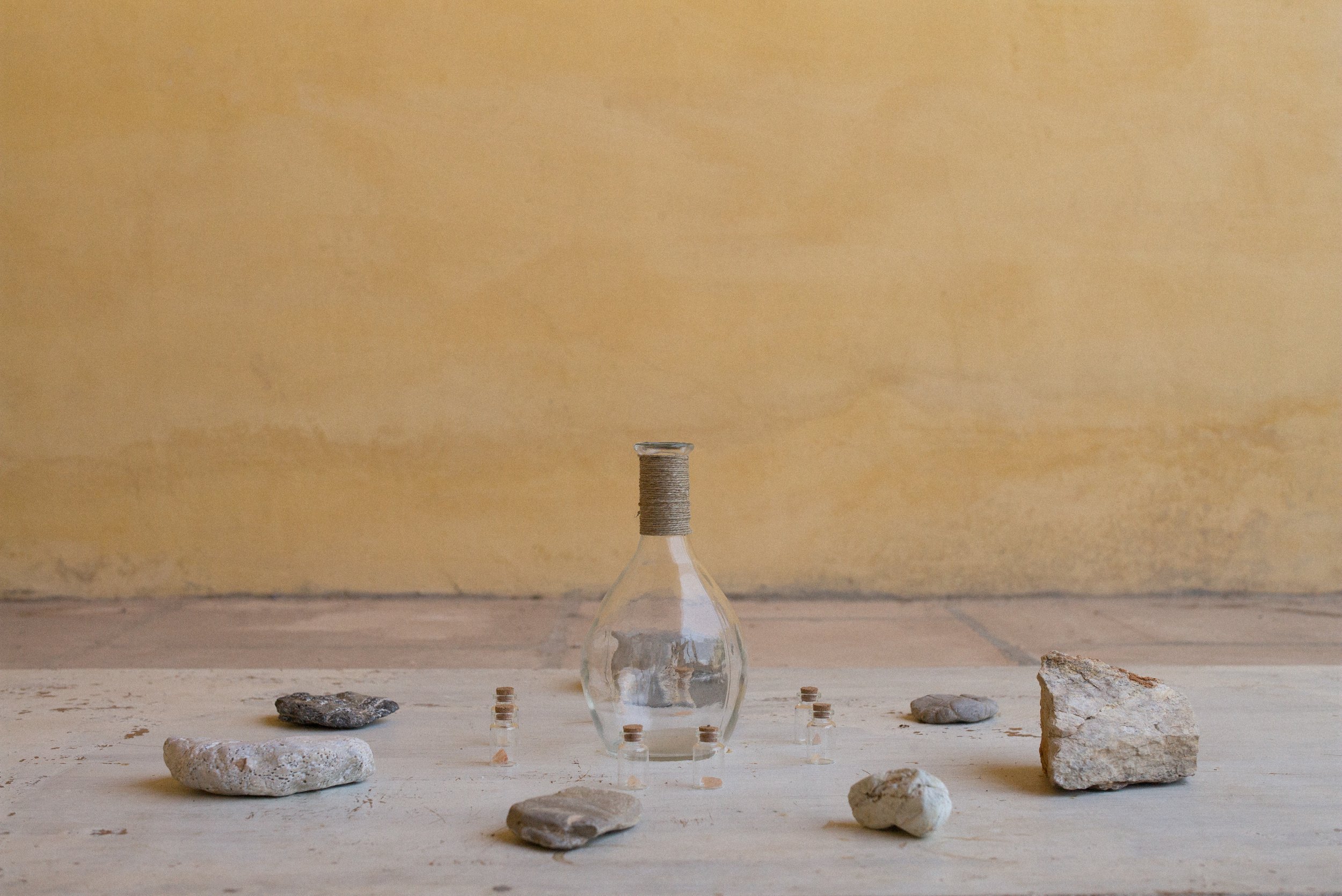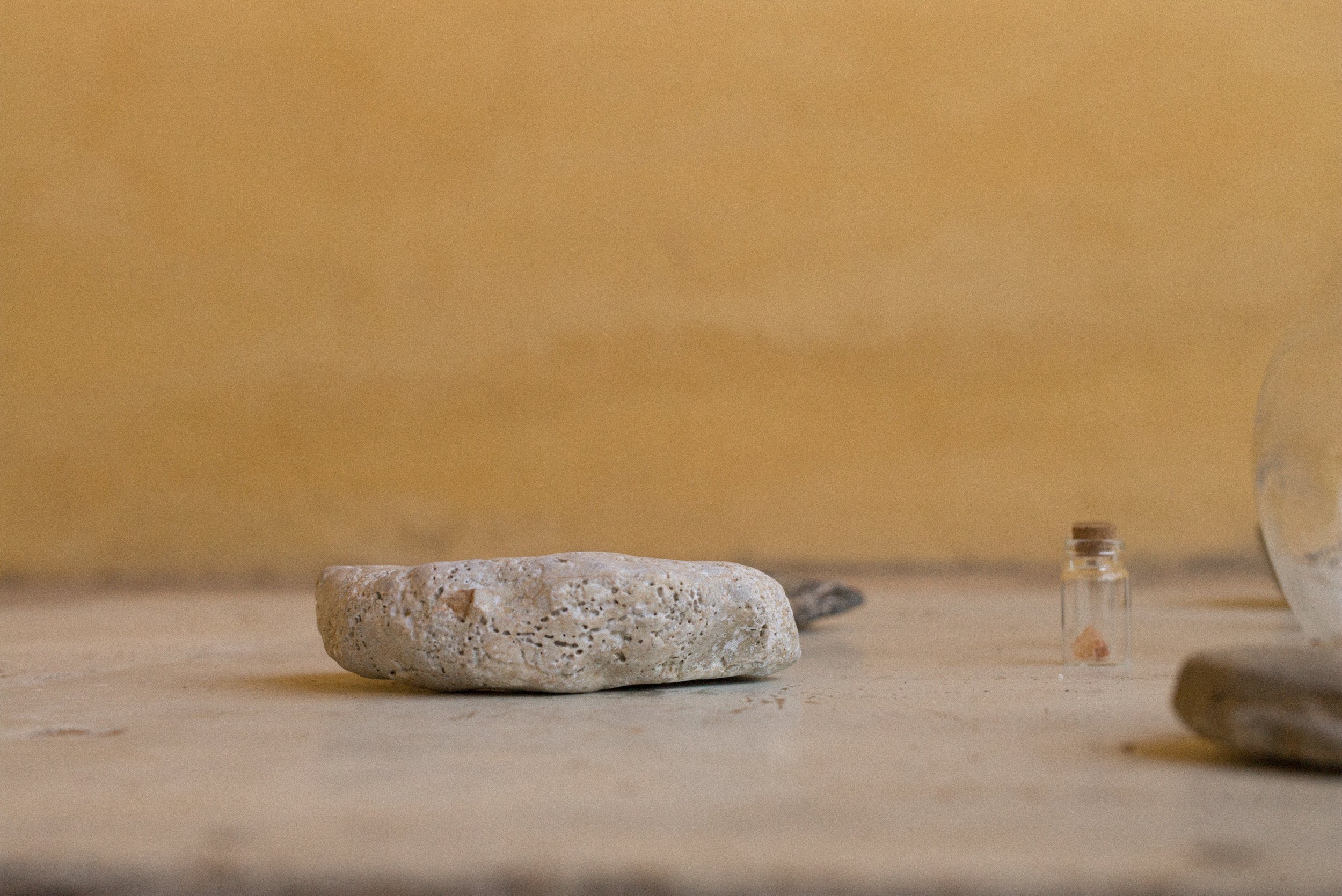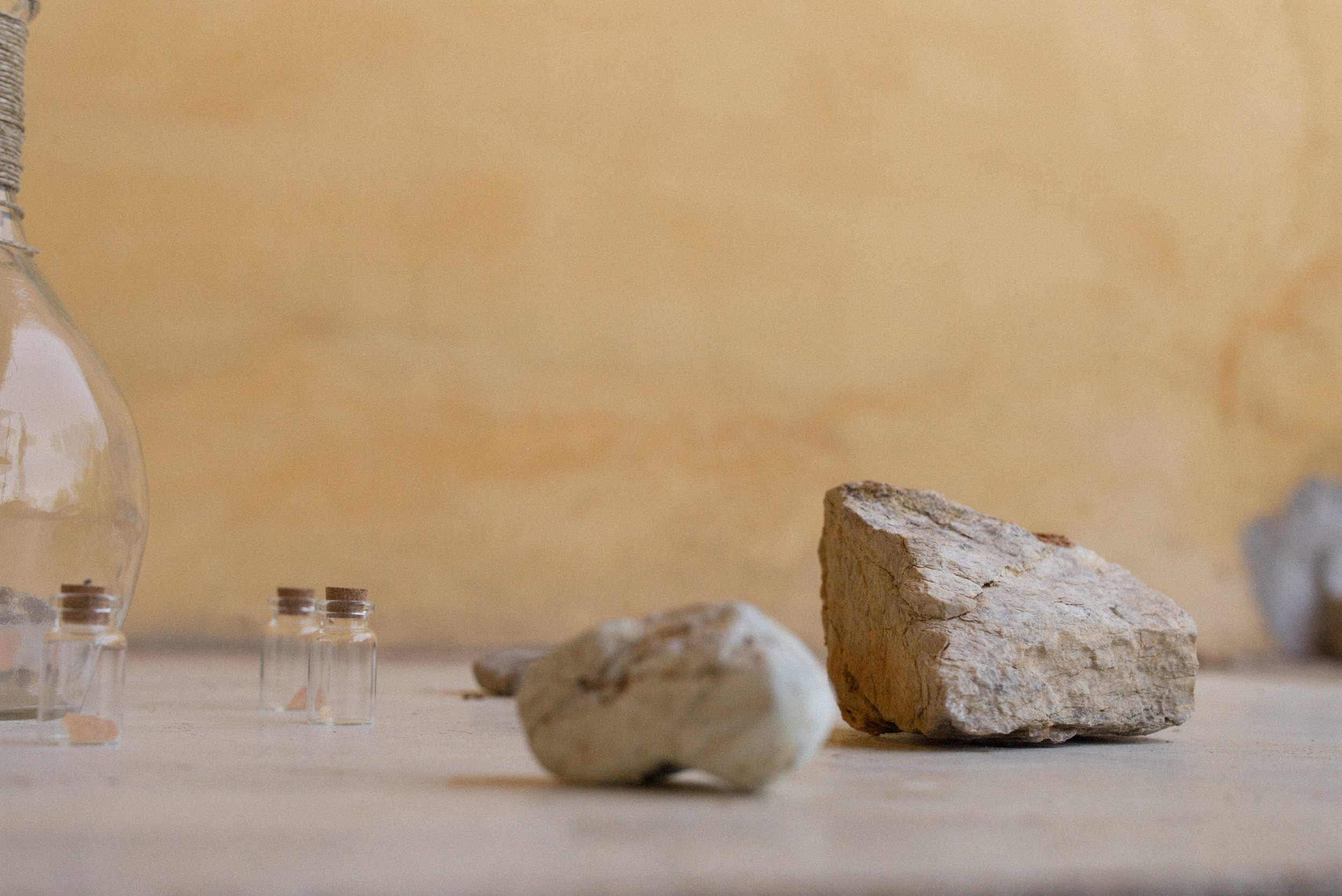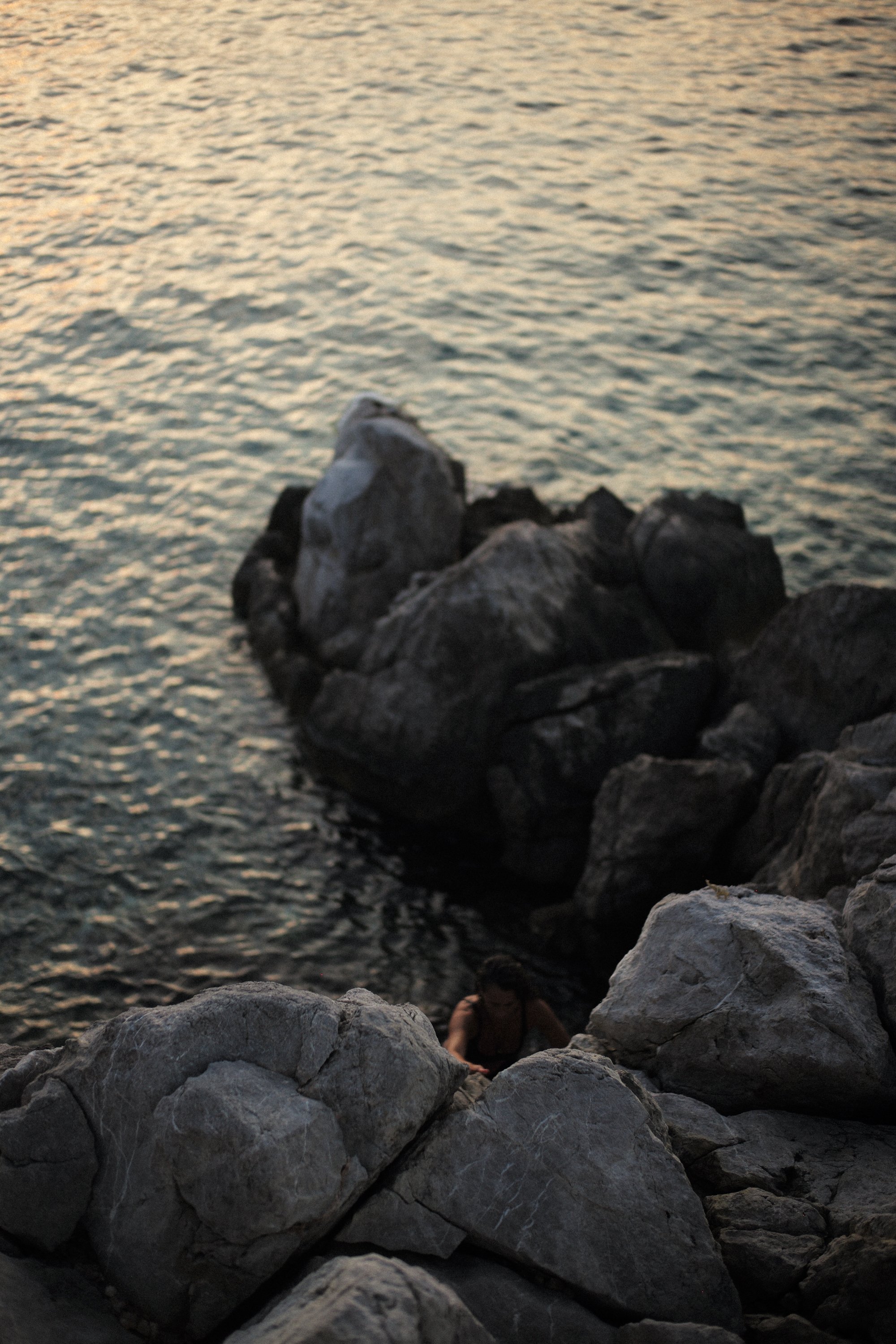The Shaman’s Clock | We are all under the weight of gravity →
Hydra, Greece, 2021
I live my life in widening circles
that reach out across the world.
I may not complete this last one
but I will give myself to it.
I circle around God, around the primordial tower.
I’ve been circling for thousands of years
and I still don’t know: am I a falcon,
a storm, or a great song?
Kanna Exhibition, Shiro Oni Residency
Onishi, Fujioka, Gunma Prefecture, Japan
September 23 - 25, 2022
The three pieces made for the Kanna Exhibition are comprised of sanbaseki stone, straw rope, wood, and urushi laquer. Each water feature is centered around a single carved chunk of green crystalline schist, bought from local stone dealers in Onishi. The town, known for the once booming stonemasonry business, has slowly declined as garden stones have become less popular throughout Japan. While there used to be four hundred stone dealers in Onishi, now only a handful of them are still active.
Hanging Water is the first piece I made as a resident at Shiro Oni. Like puzzle pieces, the carved sanbaseki stone fits two wooden riser blocks. The top of the stone is polished flat with a single, shallow bowl of water. Hanging above the water bowl is my interpretation of a 吊り手水 device used for handwashing in the early Showa era. The naturally antimicrobial copper bowl was made by hammering a copper sheet into the stone basin, carefully hung with woven straw rope.
The centerpiece of Sanbaseki Fountain I is a stone from Mr. Fujimaki’s yard, carved and polished on three sides with a drilled opening for a floral arrangement. Water is guided in a closed loop from the laquered basin, through the stone, and over the polished top.
The final piece, Straw Rain Chain, includes a single sanbaseki stone held in place by carved wooden legs. Hanging above the stone basin is a rain chain made of four lengths of straw rope, woven into a spiral stitch knot. Rain chains originated in Japan, and were first implemented as part of Sukiya-style buildings used for performing tea ceremonies. Based on an aesthetic of naturalness and rustic simplicity, buildings in this style were intended to harmonize with their surroundings. As a result, rain chains of that period were made of help-palm fibers, straw rope, or bamboo rather than metal cups. While working on this piece, I was also reading Viktor Schauberger’s book, Living Water. As the son of a forester, he spent his life closely observing nature. He was particularly fascinated with the movement of streams and their tendency to follow a spiraling-vortical motion. With this in mind, I decided to design the rain chain to complement the helical path of flowing water as it is guided from gutter to garden.















